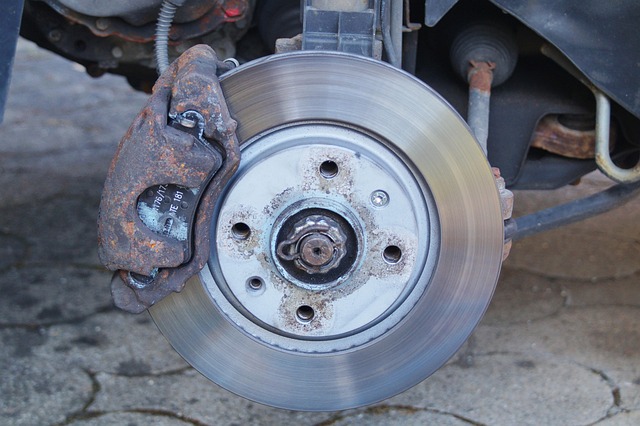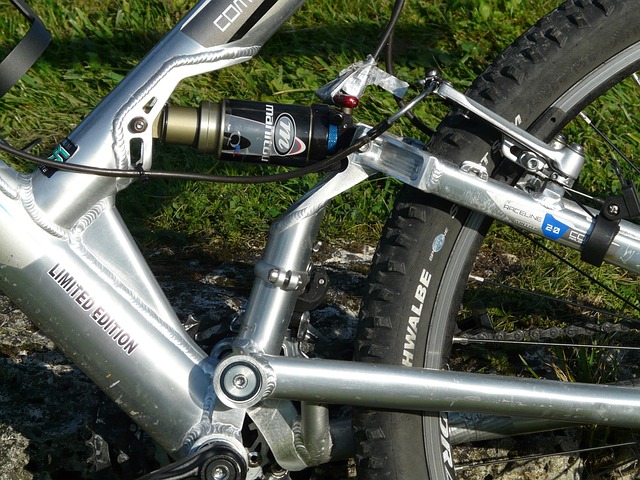The ABS light signals potential issues with your vehicle's anti-lock brake system (ABS). Causes range from sensor malfunctions to fluid leaks or worn components. Early diagnosis through inspections can prevent severe damage and optimize maintenance. Regularly check brake fluid levels, assess its condition, inspect for rust, and address leaks. Calibrate wheel sensors for accurate braking performance. Ignoring ABS light issues could pose safety risks. Upgrading to select brake systems ensures optimal braking potential and safety, tailored to vehicle type.
Is your vehicle’s ABS light on? Don’t panic! This guide will help you maximize your vehicle’s braking potential. We’ll walk you through understanding the ABS light, inspecting brake fluid levels, checking wheel sensors, and diagnosing other issues. Additionally, learn about select optimal brake system upgrades to enhance performance and safety. By following these steps, you can ensure your vehicle stops smoothly and confidently.
- Understand ABS Light Meaning and Causes
- Inspect Brake Fluid Levels and Condition
- Check Wheel Sensor and Calibration
- Diagnose Other Potential Issues
- Select Optimal Brake System Upgrades
Understand ABS Light Meaning and Causes

The ABS light, which stands for Anti-lock Brake System, is a crucial warning signal indicating potential issues with your vehicle’s braking system. When illuminated, it signals that something is amiss with the select brake systems designed to enhance safety and control during emergency stops. This light can appear due to various reasons, ranging from simple sensor malfunction to more complex problems like fluid leaks or worn-out brake components.
Understanding the ABS light’s meaning goes beyond just recognizing a problem; it’s about identifying the root cause. If you’re experiencing this warning, it’s essential to have your vehicle inspected promptly. Early diagnosis, whether dealing with unusual brake system noise, checking for break pad wear indicator installation, or contemplating master cylinder repair vs. replacement, can prevent more severe and costly damage, ensuring your peace of mind on the road.
Inspect Brake Fluid Levels and Condition

Regularly checking your brake fluid levels is an essential part of maintaining optimal braking performance. Not only should you ensure that the levels are within the recommended range, but also assess the condition of the fluid. Over time, brake fluid can become contaminated or degraded, leading to reduced efficiency and even potential damage to your vehicle’s select brake systems. Contaminants like moisture, air, or wear debris can compromise the fluid’s ability to transfer heat and reduce its boiling point, which is crucial for effective braking, especially in high-performance vehicles like sports cars where efficient cooling solutions are paramount.
Inspecting for signs of rust on brake components is another critical aspect. Rust can cause air to become trapped in the system, leading to pulsating brakes and reduced stopping power. If you notice any rust, consider removing it carefully using specialized tools and techniques. Additionally, keeping an eye out for any leaks or moisture around the brake calipers and master cylinder can help prevent corrosion and ensure your braking systems operate at peak condition, contributing to enhanced safety on the road, a factor that’s especially significant when considering the evolving landscape of autonomous vehicles and their advanced braking technologies.
Check Wheel Sensor and Calibration

When addressing issues with your vehicle’s braking system, one crucial step often overlooked is checking the wheel sensors and their calibration. These sensors play a vital role in modern brake systems, especially those equipped with dynamic brake control technology. They provide critical data to the car’s computer about wheel speed and rotation, enabling precise and efficient braking performance. If there’s an ABS light on your dashboard, it could indicate a sensor malfunction or misalignment, impacting overall braking potential.
Proper calibration ensures that each sensor is functioning optimally and sending accurate signals. This is particularly important for vehicles with custom brake upgrades for sports cars, where precision is key to achieving superior handling and stopping power. Regular maintenance and checks can prevent issues like master cylinder repair vs. replacement, as well as ensure your brakes respond dynamicly and effectively in various driving conditions.
Diagnose Other Potential Issues

If your ABS light is on, it’s crucial to diagnose the root cause beyond potential break pad wear indicator issues. While regular maintenance and prompt replacement of worn-out pads are essential, other factors could be at play. Advanced drivers should consider that modern vehicle brake systems, especially in light duty trucks, often incorporate sophisticated electronics and sensors that can malfunction.
When troubleshooting, keep in mind the broader vehicle brake system design principles. From fluid levels to sensor operations, each component interacts to ensure optimal braking performance. Ignoring even a minor discrepancy could lead to serious safety concerns. Therefore, if you’re not comfortable performing these checks yourself, consult a professional mechanic who can accurately diagnose and address any issues, from faulty sensors to worn calipers or master cylinders, ensuring your vehicle’s braking potential is fully realized through the correct break pad wear indicator installation and other suitable light duty truck brake upgrades.
Select Optimal Brake System Upgrades

When aiming to maximize your vehicle’s braking potential, especially with the ABS light on, upgrading your brake system is a strategic move. The first step involves understanding your vehicle’s requirements based on its type—whether it’s a sports car in need of precise handling or a truck demanding heavy-duty stopping power. For trucks, selecting robust brake systems that can handle increased load and towing capabilities is crucial. Similarly, sports cars benefit from high-performance brakes designed for improved cooling solutions to withstand intense driving conditions.
Off-road vehicles present unique challenges, requiring specialized brake systems tailored for rugged terrain and diverse driving experiences. The key is to choose brake upgrades that offer enhanced stopping force, better heat dissipation, and consistent performance under varying conditions. This ensures not only the safety of your vehicle but also optimizes its overall braking potential, especially when navigating through challenging circumstances indicated by the ABS light.
If your ABS light is on, it’s crucial to address the issue promptly. By understanding the meaning and causes of the ABS light, inspecting brake fluid levels, checking wheel sensors, and diagnosing other potential issues, you can maximize your vehicle’s braking potential. Once you’ve identified the problem, consider upgrading to optimal brake systems to ensure safety and enhanced performance. Remember, selecting the right brake systems can make all the difference in your driving experience.
